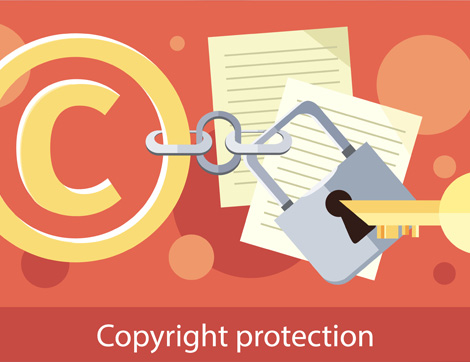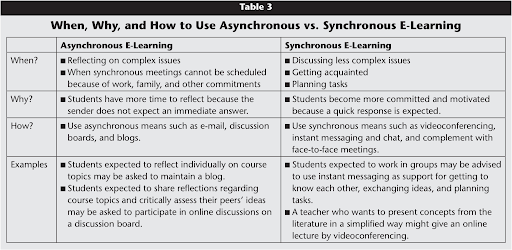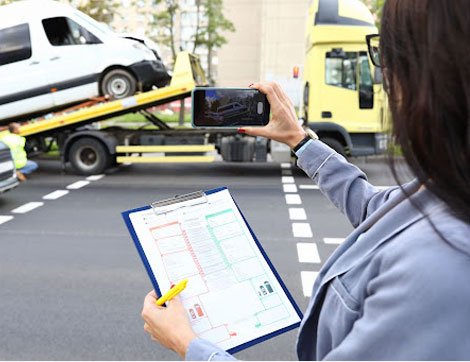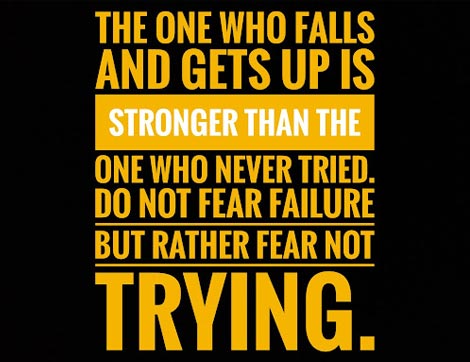 Andrew is an educational and business professional and known intrapreneur who specialises in leading high performing teams, optimising business processes and quality assurance and compliance frameworks. He is a proven transformational leader and has successfully fulfilled managerial and leadership positions across a range of industries.
Andrew is an educational and business professional and known intrapreneur who specialises in leading high performing teams, optimising business processes and quality assurance and compliance frameworks. He is a proven transformational leader and has successfully fulfilled managerial and leadership positions across a range of industries.
Areas of specialisation include:
♦ C-Suite executive across ASX and non-ASX businesses
♦ Experienced Chair
♦ Conference speaker
♦ Governance, audit and risk specialist
♦ Not for Profit Board member
♦ Business improvement and compliance advisor
♦ Tertiary Education digital marketing advisor
Over the last 15 years, Andrew has managed and/or consulted with a number some of Australia’s best known Registered Training Organisation’s. As a teacher by trade, he for has personally delivered training and coaching sessions to over 2000 individuals over this time.
In addition to his organisation development and leadership capabilities, Andrew is well recognised in relation to his instructional design and course development capabilities having developed high quality training and assessment materials in the fields of Hospitality, Security, OH&S, Construction, Training and Assessment, Business Management and Leadership.
Andrew has a thorough knowledge of both challenges experienced by training organisations and also industry best practice having led a number of award winning training providers.
1. When it comes to your work as the Chief Executive Officer of two Registered Training Organisation’s that have been recognised with multiple awards, what lessons are there for other providers in what you have learnt in your role?
I am really proud of the recognition that our team at Builders Academy Australia and CWBTS has received across a number of years including being recognised multiple times as the Victorian Training Provider of the Year, NSW finalist for Training Provider of the Year, and last year as the Australian Small Training Provider of the Year at the Australian Training Awards.
Despite our growth and recognition for innovation, quality and great outcomes, we have not necessarily focussed on building our business, but instead on building the capacity of our people, and in-turn, our fantastic team has then helped to grow our business and help more students across Australia through embedding innovative practice whilst maintaining quality outcomes.
We are pleased that we have been able to sustain quality outcomes for our students and employer partners for a number of years, despite the challenges from Covid-19 restrictions and these outcomes have been supported by maintaining a deep understanding of who our students are, the motivations they have towards completing their studies, and embedding industry engagement, and current and future industry skills into all content that we deliver. Through utilisation virtual reality and 3-d walkthroughs of actual building sites as part of our virtual classroom delivery model, we were able to continue to support students despite Covid-19 related limitations for periods.
My team has been proud to showcase that a focus on people, while being a for profit organisation, are not mutually exclusive measures of success in the training system. In 2020/2021, our agile business model, responsive staff and well-developed virtual learning platform has meant that not a single student has missed a training session due to COVID-19. Even the most kinaesthetic of learners has benefitted because of our real commitment to replicating on-site experience, student success and quality outcomes.
I think that maintaining a focus on what industry needs, and reverse engineering our learning and assessment strategies around how we can best support students to achieve those outcomes has had us well placed. We also deeply respect the impact we can have outside of the formal learning environment and dedicate much focus on initiatives such as diversity across the building and construction sector, supporting disengaged youth towards employment opportunities, men’s mental health awareness initiatives and reducing homeliness across our community.
We are as proud of our involvement in these areas as all other achievements and our genuineness in this focus, I believe, is respected and appreciated by both our fantastic staff, students and business partners.
2. You personally have also been recognised for your leadership in your organisation and across the sector with multiple awards such as the Professionals Services and Educational Executive of the Year at the CEO Awards. What lesson have you learnt about the importance of strong leadership in our sector?
In the 6 years I have been in my current role, and my previous senior executive roles, I have focussed on embedding a values-based culture that invests in student success – with enthusiastic staff, robust systems and innovative platforms.
I believe in a human-centric leadership approach and have attempted to build a culture of trust within my team, with a clear vision, and regular and open communication that drives greater empathy among employees and overall improves performance across the divisions of the business. This was particularly important during the uncertain periods that Covid-19 resulted in.
This focus flows through to the relationships we have with our students, as we ensure that we engage personally with people as individuals, utilise stories and marketing as tools for transformation, and engage actively in the macro-level conversations of our industry and the broader VET sector. This collectively shapes our delivery and development, which leads to outstanding outcomes and career pathways for a diverse range of students and staff.
I am a passionate ambassador for the VET sector and am proud to be part of a sector with such dedicated professionals who focus on helping students achieve their learning and career ambitions.
Over the previous 17 years, I have worked across public (TAFE), enterprise and independent training organisations, holding Senior Management and Executive level positions, delivering across diverse cohorts including to domestic students, onshore to international students and offshore to international students. This is a sector that I believe is integral to Australia being able to meet its current and future skilled labour requirements and maintain efficient and productive workplaces.
It is a sector that I look forward to continuing to take part in and positively impact for many years to come.
3. Could you briefly elaborate on your role and responsibilities at ITECA as well as how ITECA is assisting the RTO industry?
I have been actively involved with the Independent Tertiary Education Council Australia (ITECA) (previously the Australian Council for Private Education and Training (ACPET)) over the last 12 years, and I am pleased to have been able to play a role supporting the Peak body for independent tertiary education providers.
With ITECA, I am proud to be currently a Non-Executive Director and Board member, as well as Chair of the National VET Steering Group, Chair of the Governance Committee and Chair of the Victorian State Community. ITECA is supported by a strong executive team, highly respected Board members, and passionate VET professionals who represent strongly on State and National Committees.
With Independent tertiary education providers delivering the majority of training across Australia, ITECA plays such an important role as a strong voice representing the interests of its members, as well as the broader independent sector. This representation and the community of practice that ITECA has created has become even more important over the last 18 months where a range of providers have faced significant challenges aligned with Covid-19 restrictions.
The role of Peak Bodies such as ITECA is integral through the functions they complete including research, policy development, advice to government and sector advocacy and representation. ITECA plays an important role in championing the great outcomes being achieved by independent provides across Australia, and through research papers such as their ‘State of the Sector Report’, they help to ensure that government policy is, as much as possible, aligned with real outcomes and data rather than more ideological reasoning.
Whether it being with ITECA, other Peak Bodies or industry associations, I would recommend to all that they look to join and become active in helping to drive positive changes for our sector.
4. You are one of the very few recognised quality industry experts and leaders that we have in Australia, so how has your experience been working with the regulatory body ASQA to assist them in the transition process that they are currently undergoing?
I think that we have a range of quality representatives and consultants in Australia who add much value across the sector.
My pathway towards becoming a CEO is one that is potentially unconventional for our sector having followed a pathway from training delivery, into Training Management, into managing Resource Development and Curriculum Design, into Quality Assurance and Compliance Management and then as a VET Quality Consultant across public and independent providers.
I do remember speaking at a conference many years ago and being introduced as one of Australia’s first Compliance CEO’s which to me seemed a strange thing to be noted due to how highly regulated our sector is and the significant importance of a CEO being intrinsically involved in ensuring quality and compliance across their organisations.
I have always seen a strong focus on quality and compliance in our sector as a business enabler and to this stage of my career I believe the investment into understanding the VET landscape including all aspects of regulation and compliance has been highly beneficial in my role as CEO as well as someone who often speaks at industry events and conferences, with a focus on providing helpful guidance to others in our sector.
I believe that a short number of years ago, the disconnect between the National Regulator and the regulated community was something unhealthy for our sector and the uncertainty for RTO’s on what they could expect at audit and how to ensure their own operations where compliant with respect to each aspect of the Standards was to the detriment of our sectors reputation.
With significant changes to the Australian Skills Quality Authority (ASQA) to adapt its culture and relationship with the sector, including a move away from their previous audit model to a performance assessment framework, I think that genuine change has been occurring and across a number of areas the rubber has been genuinely hitting the road.
I was pleased to be appointed to the ASQA Stakeholder Liaison Group (SLG) and I have been impressed about ASQA’s openness to take on feedback from members of the SLG, using this feedback to update key documents including their Corporate Plan and Regulatory Model to reference areas such as the importance of education and consistency in audit activity and outcomes.
One of the significant changes that ASQA has implemented has been its launched educative function which I believe has added great value to RTO’s in understanding their obligations, as well as hearing from industry representatives on how they implement best practice in their own organisations.
I have been glad to be able to work with others to positively support ASQA’s launching of this educative function, and their initial content production, having taken part myself in 6 education sessions so far covering topics such as regulatory practice, audit expectations, online education quality and compliance expectations and trainer capability.
I look forward to further ASQA webinar sessions over the coming months where I will be presenting on teacher/trainer capability and the upcoming review of the TAE Training Package.
All involvement in these groups, working committees and conferences I speak at, I do unpaid, and volunteer my time in order to positively support the VET sector.
5. You are Chair of the Education Industry Reference Committee and the Foundation Skills Industry Reference Committee through PWC – Skills for Australia, what changes to Training Packages can we expect to see over the coming period.
I was humbled to be nominated by my peers as Chair of these IRC’s that have such high quality and respected VET sector representatives on them. I don’t take lightly the importance of getting Training Packages right for training providers, students and the industries which employ graduates, and this will be particularly the case for an upcoming new version of the Certificate IV in Training and Assessment.
The Industry Reference Committee has on three previous occasions requested to the Australian Industry and Skills Committee (AISC), that a review of the TAE Training Package take place to ensure that any disconnects with industry needs can be addressed. It has been the view of the IRC for an extended period that the Training Package does not fully address modern workforce needs including the Certificate IV’s insufficient flexibility regarding packaging rules.
Pleasingly, the AISC has now approved the review, and redevelopment can take place and the IRC is looking forward to receiving robust feedback from providers to ensure that improvements can be made.
The review itself will take part in two stages, with an initial e-learning and e-assessment development project to be completed by December in 2021, and a full review of all qualifications within the TAE Training Package to be completed by late November 2022.
One important point is that it will be the strong recommendation of the IRC, that any new version of the Certificate IV in Training and Assessment, be recognised as the successor to the current (under clause 1.14 / 1.15 in the Standards for RTO’s) so that the current workforce who hold the TAE40116 will not be required to upgrade their qualifications.
I have already delivered a number of webinars on these topics and for those who wish to take part in helping with the review and redevelopment I would encourage to go to the PWC – Skills for Australia website and sign up for their newsletter which will provide information on upcoming sessions and working groups. Readers are also welcome to follow me on Linkedin where I will be sharing updates on the project.
6. What are your opinions on all of the changes that will occur in the VET sector in the near future, including the new regulatory framework, the new TAE certificate, the new AQF framework, the cessation of ISCs and SSOs, the redesign of units of competency, and everything else that will occur?
In 2020, the National Centre for Vocational Education Research (NCVER) released a research paper identifying that the VET workforce includes some 246,000 representatives with another 177,000 who work in volunteer roles. I think the significance of our sector, and its importance in helping Australia meet its current and future labour needs can’t be understated.
There are a number of VET Quality Reforms underway at present, with a focus on ensuring that our sector is fit for purpose and is regulated and supported in a way that will help achieve the outcomes required.
In addition to a current review of the Standards for Registered Training Organisations that is underway, earlier this year, Skills Ministers agreed to establish new industry-based clusters (Industry Clusters) with broad roles and responsibilities for skills and workforce development by December 2022. Industry Clusters will replace Industry Reference Committees (IRCs), Skills Service Organisations (SSOs) and Skills Organisation Pilots (SOs).
The establishment of Industry Clusters is intended to enhance the role of industry in the national training system with a broader role and greater accountability to industry.
I am part of a number of consultations on this review activity through the different hats that I wear, and in each I do raise my concerns regarding the potential to not intrinsically involve Registered Training Organization’s as part of the process of Training Package design and implementation. I think to not do so, is not only disrespectful to a sector that employs or engages a workforce of over 400,000, but would also be counter-intuitive to achieving positive outcomes that draw on the knowledge from strong relationships that RTO’s have with the industries they help serve with graduates.
With the approved review of the TAE Training Package now underway, I was pleased that aligning with this a TAE Strategic Advisory Committee has been established with myself being an invited member. This Committee will act as a sounding board for the Education IRC throughout the TAE Training Package re-development project, with the key goal of ensuring appropriate linkages between the review and broader VET workforce policy and regulatory directions and settings.
This will allow for input on topics such as clauses 1.17 to 1.20 within the Standards for RTO’s to ensure that the Standards continue to allow for the provision of supervision of trainers where needed, even where the standards and training package may be updated, with an additional skill set that may be agreed to be recognised under this clause being developed.
7. I clearly remember that we first spoke in 2010 when you were the CEO of a different training organisation and I was a Director of Studies somewhere else; what do you believe has changed in the VET sector in the last 10-11 years and what do you believe we will see over the coming years?
I have enjoyed seeing your journey as a highly respected VET sector representative, and it does feel like a long time since then.
It is important to remember the significant role our sector plays in supporting Australian workforces with our VET sector made up of over 3500 registered training organisations (RTOs) delivering nationally recognised VET, and a number more delivering micro-credentials and non-accredited training. In 2020, 3.9 million students were enrolled in nationally recognised vocational education and training (VET) despite challenges faced over the period including a significant reduction in international students.
Increased and inconsistent regulatory activity; reduced and/or inconsistent State and Federal investment into the sector; changes to visa and related conditions for international students; and delivery impacts caused by Covid-19 restrictions have all challenged providers in their continued support of student learning outcomes and this has seen a significant reduction in training provider numbers over the last decade.
I think that our sector has also taken a number of years to recover from the reputational damage caused by a small number of unscrupulous providers related to the use of VET-FEE Help who took advantaged or a poorly structured and regulated scheme.
Despite this, the very large majority of training providers of all types, continue their focus on student centric, high quality delivery and student and employer satisfaction rates continue to show that largely positive outcomes continue to be achieved throughout the sector.
I think what we will see over the coming years is a much greater focus on collaboration, and organisations either working as part of a consortium or as a minimum as part of a strong community of practice. This will support the sharing of ideas, and quality practices across organisations, and make benchmarking easier for the betterment of all. Consultants also play an important role in conducting reviews across an RTO’s operations and giving insight into best practice and innovation they have seen in other areas of the sector.
I think that the importance of RTO’s being part of their Peak Bodies, or other quality and practitioner networks will continue to increase, and, in a post Covid-19 environment, the importance of the VET sector will be more so than ever. This will include the return of international students with Australia able to continue to build on its strong reputation in supporting students who wish to study both onshore and offshore.
Despite the challenges that Covid-19 created in limiting face to face delivery for periods, the online learning workforce capability this fast-tracked will be of great benefit to providers and the sector moving forward. From a recent paper released by ASQA, survey data from over 3000 participants at a webinar series that I was part of regarding online learning, showed that over 90 per cent had started or increased delivery via an online mode over the last 18 months. Although online learning is not suited to all student cohorts, or all qualifications, and rarely can it meet the needs of delivering full qualifications, this capability will better aid the sector in meeting student needs and expectations moving forward.
For those who wish to connect with or follow Andrew Shea, you can do so via his Linkedin, here – www.linkedin.com/in/andrewjshea





















 Andrew is an educational and business professional and known intrapreneur who specialises in leading high performing teams, optimising business processes and quality assurance and compliance frameworks. He is a proven transformational leader and has successfully fulfilled managerial and leadership positions across a range of industries.
Andrew is an educational and business professional and known intrapreneur who specialises in leading high performing teams, optimising business processes and quality assurance and compliance frameworks. He is a proven transformational leader and has successfully fulfilled managerial and leadership positions across a range of industries.